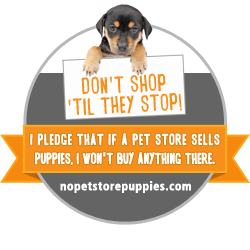9 Facts About BSL
August 8, 2013 11 Comments
Throwback Thursday seems to be a thing for radio stations and photo blogs, but I’ve decided to dig into the archives of the Soapbox a little.
The second post ever to appear on the Soapbox, almost three years ago, was basically a long essay about breed-specific legislation (pit bull bans, to be specific).
It’s over 4,000 words and contains not a single picture. Really setting up for blogging success, wasn’t I?
Who knew the long and detailed philosophy writing I was practiced in wouldn’t prepare me for writing for the internets?
So I’ve decided to revisit the subject in a (slightly) more succinct way, despite this being a no-brainer subject to most dog people and there being a myriad of other online resources for this subject.
Truth is, every time a dog bite hits the headlines here, the local papers do their polls and a disappointing 40% of Calgarians support the idea of breed bans, causing my internal rage-o-meter to flare up.
So, if I’m preaching to the choir, just be happy I included pictures this time.
9 Facts About BSL
1. It doesn’t actually work. Breed-specific legislation is often introduced after a cluster of fear-mongering headlines like “Pit Bull Attacks Toddler” and politicians find themselves struggling to look useful and effective (what else is new?). This is how Ontario got its pit bull ban. But the ridiculous part is that these bans actually do nothing to reduce dog bite incidents. Seriously. After 5 years, Ontario got no tangible results from their pit bull ban, yet that still hasn’t been reason enough to repeal the ridiculous legislation. The Netherlands actually did repeal their BSL in 2008 after they found no decline in dog bites in 15 years.

Alma with friends, Homer and Kimbo. Chows are another “bully” breed often unduly legislated against.
2. BSL is hard to enforce. Most people can’t even correctly identify a pit bull (you can even test your idenfication skills here), and law or by-law officers are rarely properly trained in dog breed identification to properly enforce these measures. Sometimes, like in Ontario, owners are actually required to prove their dog is not a pit bull, rather than the government prove it is. And when the Canadian Kennel Club doesn’t recognize pit bull terrier as an actual breed, that turns into a problematic thing to assess and enforce.
3. The statistics used to jusitfy BSL are dubious and the definition of “pit bull” cited in dog bite stats is questionable, since often dogs involved in bites or fatalities are of a mixed or unknown breed. In actuality, in Canada from 1990-2007 there were 28 fatal dog attacks and not one is attributed to a pit bull.
4. Just like most things, the media plays a big part in the narrative. If a pit bull is involved in an altercation, the odds breed is going to be mentioned in the headline is much greater than most other dog breeds. Chances are the story travels further and gets more attention are also greater. This does not at all mean that other dog breeds don’t also bite, but the media treats it differently, as studies have shown. You can read more about this bias here and here.
5. “Dangerous” dog breeds are a subjective classification and change over time. In fact, did you know that at the end of the 19th century Newfoundlands were Public Enemy No. 1 for dog breeds? Newfoundlands! But that’s because they were commonly used as guard dogs, and guard dogs are (obviously) more likely to get into altercations with people. Now what breeds are used for this very purpose? Or for dog fighting? This isn’t a meaningless conicidence; if humans use dogs for aggressive purposes, they’re going to act aggressively, regardless of the breed.
6. There are more interesting statistics to pay attention to. For example, in Calgary, most dog bites in 2012, while attributed to a variety of working, herding, and terrier breeds, overwhelmingly happened more frequently in the city’s more notorious neighbourhoods. So when the top 5 neighbourhoods for dog bites also coincide with crime rates, we can then make some interesting correlations between dog bites and types of owners. Those against BSL have long said how an owner treats, raises, and trains a dog has a lot more to do with its tendency to bite than its breed does. An AVMA study of dog bites in Oregon also found a correlation between more dog bites and lower-income neighbourhoods.
7. It’s common sense that circumstances around dog bites tell more about causation than the dog’s breed. For example, most dog bites (77%) involve the dog’s own family or a friend of the family. Over half occur on the owner’s property. And the most frequent victim of dog bites are children – over 85%! You can easily see how dogs that are protective of property, tethered, or have a high prey drive can all bite under certain circumstances. I know just from walking my own dogs that many people – especially children – have very poor dog-interaction manners, and if not closely watched and coached, could easily get themselves bit just for not knowing any better. A dog will basically never bite without warning, but that doesn’t mean much if kids don’t recognize the warning signals or owners aren’t educated in the basics of dog body language.
8. If we’re going on temperament, you can do much worse than a pit bull. The American Temperament Test Society tests dog breed personalities and the American Pitbull Terrier scores 86.8%, which is higher than many breeds, including golden retrievers, German shepherds, Maltese, sheepdogs, and corgis. There are many studies out there showing other breeds like Dachunds, Jack Russells, and Chihuahuas are all more likely to bite than a pit bull.
9. The vast majority of dog bites are preventable. Preventable by owners, not legislation. Preventable by being good, informed dog owners who know local pet bylaws and take time to walk and train their dogs. Preventable by not leaving dogs tied up, unattended and not letting them run loose. Preventable by getting dogs spayed/neutered and socialized. Preventable by owners and parents who don’t let dogs and children interact without close supervision – ever! Preventable by people knowing to ask before they approach any strange dogs and teaching their children these habits, too.
So there you have it. BSL in under 1,000 words and now including images!
Recommended further reading: you can download the entire text of The Pit Bull Placebo, by the National Canine Research Council in PDF here and read the Canadian Kennel Club’s official position against BSL here.



































